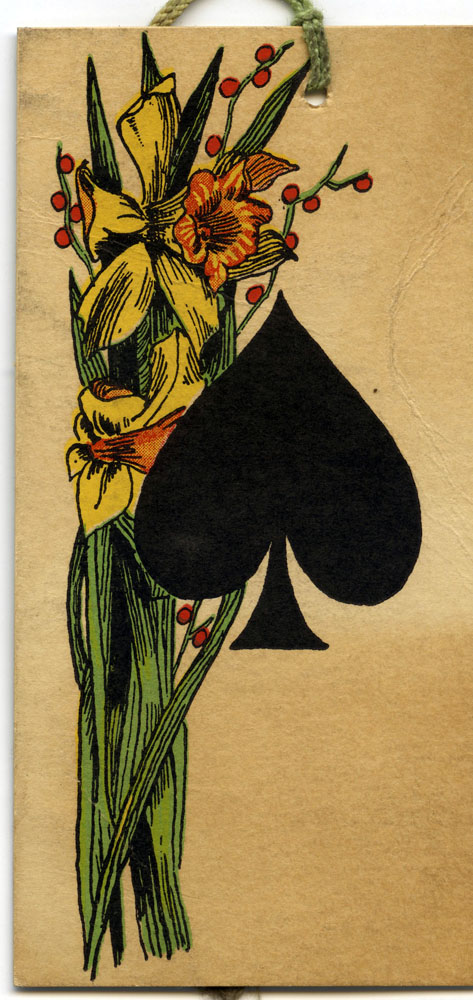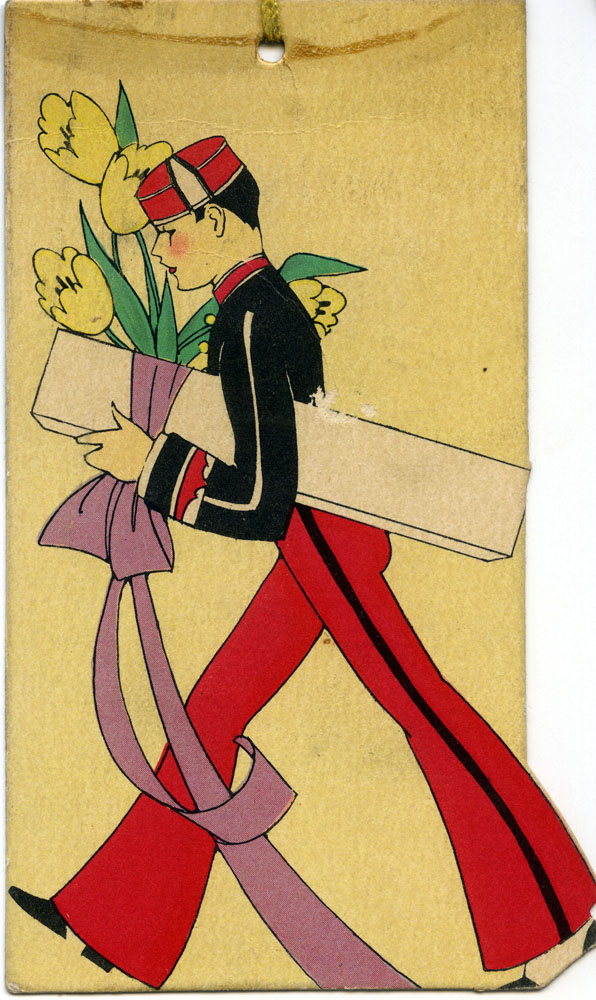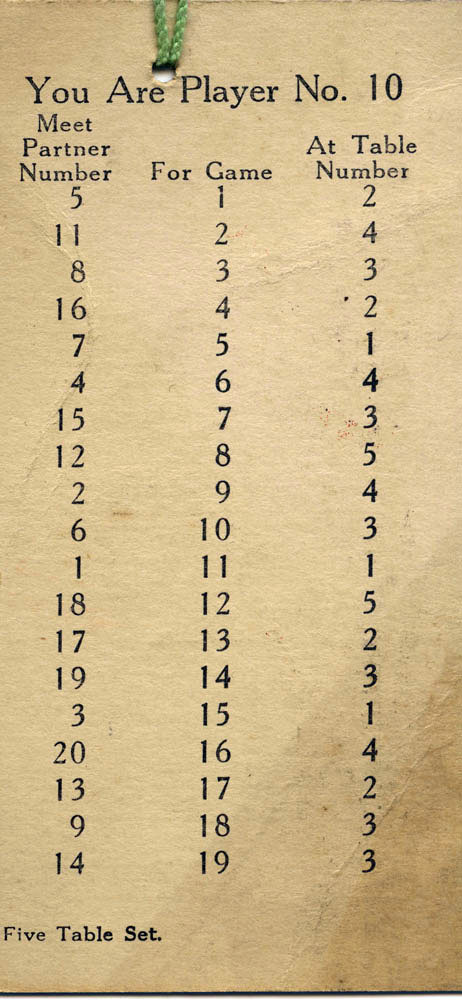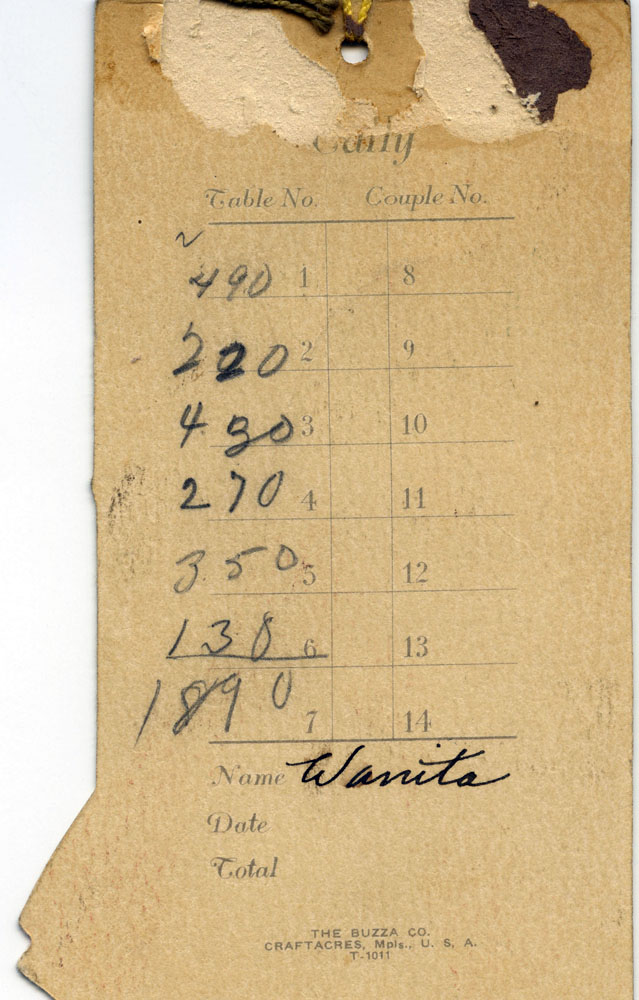These beautifully decorated dance cards, from Waneta Blue’s time at the University of Virginia during the 1920s, were not only a practical way to keep track of social engagements and dance partners, but also a small keepsake from formal dances and parties.
Dance cards became popular at balls and social events in Europe and the United States during the 1800s and remained common at dances planned for students until the 1940s.
At a dance, young men wrote their names just once in the card of each of the young women with whom they wanted to dance. Dance cards often looked like a booklet with decorative cover, and included the order of dances, including the music and composers.
As you’ve probably noticed, it was completely up to the men to decide to put their names on a woman’s dance card, and to initiate the dancing. While Waneta Blue's card doesn’t reveal any of the names of her dance partners, her evening appears to have also included at least one table game with a randomly assigned partner.
One interesting note: judging by the records in our collection, Waneta Blue appears to have experimented at times with spelling her first name with an "i" instead of an "e." An example of this can be seen at the bottom of her dance card.
The items photographed here are from our Community Archives collection, Records of the Blue Family. The collection also includes greeting cards to members of the family, school records of the Blue sisters, and more materials from Waneta Blue’s years at the University of Virginia in the 1920’s.
To learn more, visit the Center for Local History on the first floor of the Central Library.
Do you have a question about this story, or a personal experience to share?
Use this form to send a message to the Center for Local History.
Center For Local History - Blog Post Message Form
Do you have a question about this story, or a personal experience to share? Use this form to send a message to the Center for Local History.
"*" indicates required fields



